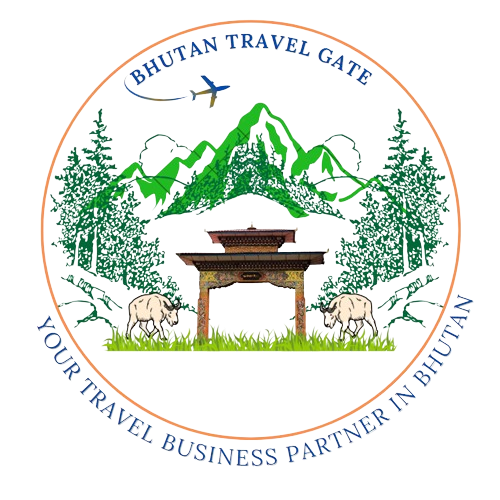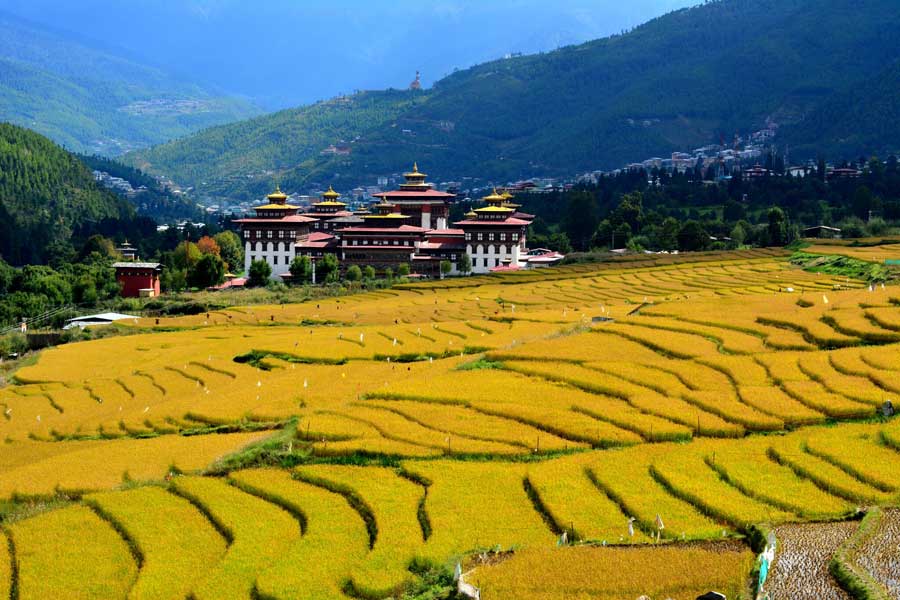Facts about Bhutan

Bhutan may be one of the smallest countries in the world with a population of just 7,50,000, but its unique cultural and traditional diversity and richness are still preserved and is actually thriving even at this modern world. The blend of age old tradition and culture with modern times in Bhutan is truly intriguing.
This is what Vikas Khanna, a Michelin Star Chef, who owns a Restaurant “Junnon” in New York, USA has to say:
5 reasons why Chef Vikas Khanna loves Thimphu
Award-winning chef, Vikas Khanna is the owner of New York’s Michelin star restaurant, Junoon. When he’s not cooking, he can be seen on TV judging people’s culinary skills on MasterChef India.
So, a strong emphasis has been laid out by the government to promote and preserve its unique Buddhist traditional culture. And by protecting and nurturing Bhutan’s living culture, it is believed that it will help project the face of the nation to the entire world, something like a living museum along with its happy citizens and a 70% green environment thereby creating (GNH) or Gross National Happiness as enshrined by the country’s constitution.
1. BHUTANESE FOOD & CUISINE
Traditional Bhutanese eating habits are simple and, in general, food is eaten with bare hands. Family members eat while sitting cross legged on the wooden floor of the traditional kitchen with food first being served to the head of the household.
It is usually women who serve the food and in most cases, the mother. Before eating, a short prayer is offered and a small morsel placed on the floor as an offering to the local spirits and deities. With rapid modernization, eating habits have however changed and in urban areas, people usually eat with the latest cutlery seating at regular dining tables.
Traditionally dishes were/are cooked in earthenware pots, but with the easy availability of modern goods, fancy pots and pans have largely replaced them. A typical Bhutanese meal consists of rice, which is the main dish and side dishes of Ema Datshi, the national dish of chili and cheese, various pork, beef dishes or lentils and the hot Bhutanese fiery Ezzay which is quite similar to the hot sambals of southeast Asia but with a nice generous dose of Sichuan pepper.
Bhutanese Food: 25 Best Dishes To Eat When You’re In Bhutan!
Mark Wiens is a World Famous Food and Travel Blogger based in Bangkok, Thailand.
2. BIRTH
The birth of a child is always welcomed like everywhere else in the world. In Bhutan, extended family members and guests are discouraged from visiting the child during the first three days after the birth.
On the third day, a short purification ritual is performed after which visitors are welcomed to visit the new born and mother. Bhutanese value children as progenitors of the future and therefore do not discriminate on the sex of the child. Traditionally various gifts are offered ranging from dairy products to cloth and money.
The child is not immediately named; this responsibility is usually entrusted to the Head Lama (Buddhist priest) of the local temple. The mother and child will also receive blessings from the local deity (natal deity) and it is traditional that the name associated with the deity is given. In some cases, the child is given the name of the day on which the child is born. Based on the Bhutanese calendar, a horoscope is written based on the time and date of the birth, this will detail the various rituals to be performed at different times in the life of the child and to an extent predict his or her future.
3. MARRIAGE
Until just a few decades ago, arranged marriages were common and many married among their relatives. In eastern Bhutan cross-cousin marriages were also once common., However, this practice is now becoming less common place among the .literate masses and most marriages are based on the choice of the individuals.
Marriages are simple affairs and are usually kept low-key. However, elaborate rituals are performed for lasting unions between the bride and the bridegroom. As the religious ceremony comes to an end, parents, relatives and friends of the couple present the newlyweds with traditional offerings of scarves along with gifts in the form of cash and goods.
In Western Bhutan, it is commonplace that the husband goes on to live in his wife’s house after marriage whereas the practice in Eastern Bhutan is for the wife to move into the husband’s home. Of course, the newlyweds may also choose to live on their own. Divorce is also an accepted norm and carries no ignominy or disgrace within the community.
4. BHUTANESE DRESS / COSTUME
One of the most distinctive features of the .Bhutanese is their traditional dress, unique garments that have evolved over thousands of years. Men wear the Gho, a knee-length robe somewhat resembling a kimono that is tied at the waist by a traditional belt known as Kera. The pouch which forms at the front traditionally was used for carrying food bowls and a small dagger. Today however it is more accustomed to carrying small articles such as wallets, mobile phones and Doma (beetle nut).
Women wear the Kira, a long ankle-length dress accompanied by a light outer jacket known as a Tego with an inner layer known as a Wonju.
However, some tribal and semi-nomadic people like the Bramis and Brokpas of eastern Bhutan generally wear clothing that differs from the rest of the Bhutanese population. The Brokpas and the Bramis both wear dresses woven either out of Yak or Sheep hair.
Bhutanese wear long scarves when visiting Dzongs and other administrative centers. The scarves worn vary in color, signifying the wearer’s status or rank. The scarf worn by men is known as Kabney while those worn by women are known as Rachus. .
The Rachu is hung over a woman’s shoulder and like the scarves worn by men, they too have specific rank associated with their color. Rachus are usually woven out of raw silk and embroidered with beautiful rich patterns.
Men’s Dress, Female’s Dress (Click here to see it for yourself)


Comment (0)